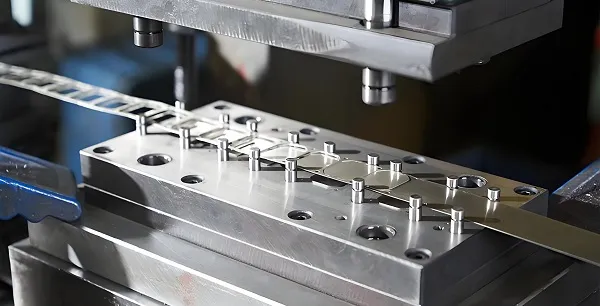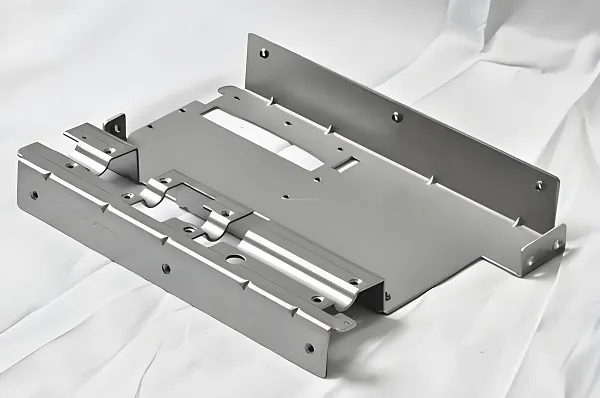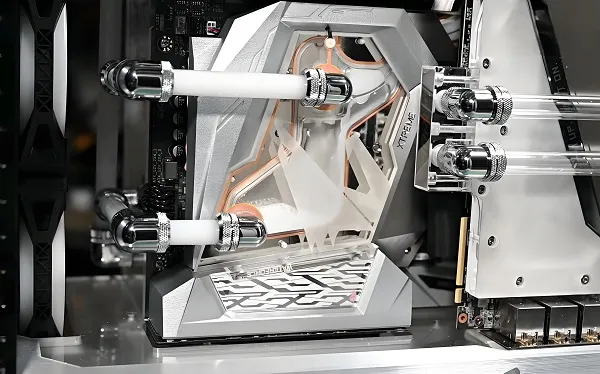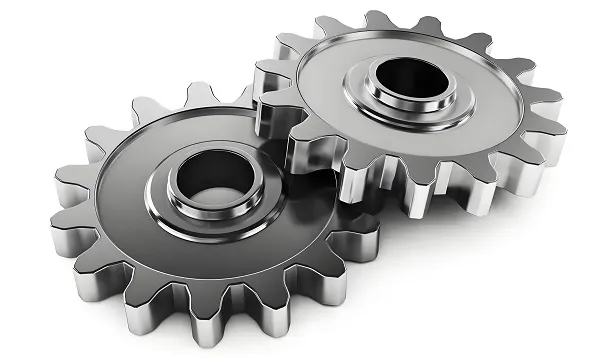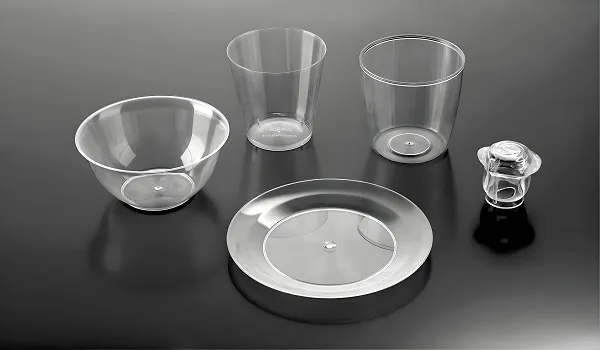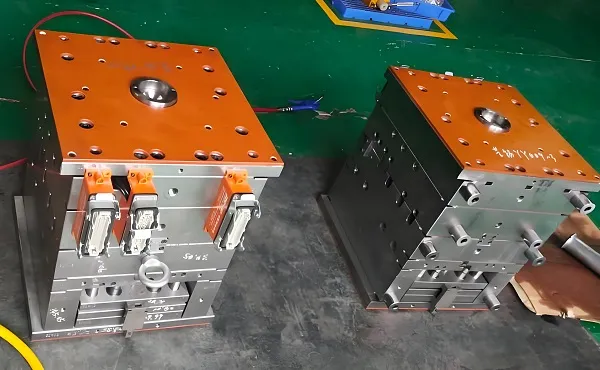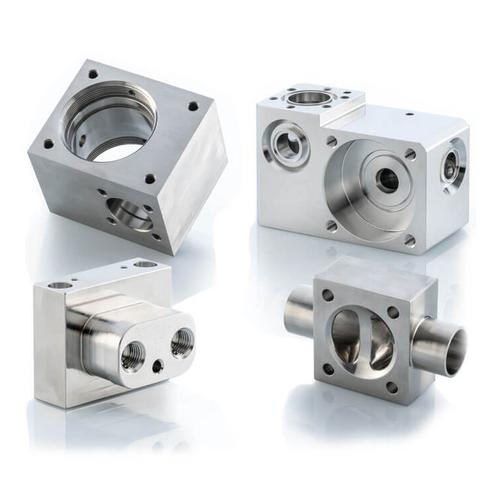
1. Face Milling: Basic Operation for Flat Surface Machining
Core Technical Principle
Application Scenarios & Typical Parts
- Basic parts requiring flatness: Top/bottom reference surfaces of metal middle frames for mobile phones, top surfaces of automotive engine blocks, table surfaces of CNC machine tools;
- Reference surface machining for subsequent processes: Preprocessing of template flat surfaces before mold cavity machining, precision finishing of assembly surfaces for mechanical parts.
Key Process Parameters & Operation Points
- Tool Selection: For aluminum and aluminum alloys (hardness HB 60-120), use 4-6 flute carbide face mills; for stainless steel (HB 150-300), use 8-10 flute ultra-fine grain carbide cutters to improve cutting stability;
- Cutting Parameters: For rough machining: depth of cut 0.5-2 mm, feed rate 800-1500 mm/min, cutting speed 150-300 m/min; for finish machining: depth of cut 0.1-0.5 mm, feed rate 500-1000 mm/min, cutting speed 200-350 m/min;
- Accuracy Control: Achieve spindle dynamic balance (G0.4 grade or higher) and machine level calibration (flatness ≤ 0.001 mm/m) to ensure machined flatness ≤ 0.01 mm/100 mm and surface roughness Ra ≤ 1.6 μm.
2. End Milling: Forming Machining for Grooves and Step Structures
Core Technical Principle
Application Scenarios & Typical Parts
- Parts with open grooves: Key installation grooves on keyboard bases, guide grooves of wardrobe slide rails, wiring grooves on motor end covers;
- Parts with step structures: Step surfaces of mechanical bearing housings, sealing steps of hydraulic valve bodies, assembly steps of equipment housings.
Key Process Parameters & Operation Points
- Tool Selection: Select end mill diameter based on groove width (cutter diameter is 0.1-0.2 mm smaller than groove width to reserve finish machining allowance); for deep grooves (groove depth > 5× cutter diameter), use long-neck end mills;
- Cutting Parameters: For aluminum parts: feed rate 500-1000 mm/min, cutting speed 150-250 m/min; for stainless steel parts: feed rate 300-600 mm/min, cutting speed 50-100 m/min;
- Process Optimization: For deep groove machining, adopt layered cutting (depth of cut per layer ≤ 1/3 of cutter diameter) to avoid chatter caused by excessive cutter overhang, ensuring groove wall perpendicularity ≤ 0.01 mm/100 mm.
3. Peripheral Milling: Forming Machining for Workpiece Outer Contours
Core Technical Principle
Application Scenarios & Typical Parts
- Parts with regular outer contours: Metal housings of bicycle pedals (circular contour), flange plates (annular contour), square connecting blocks (rectangular contour);
- Parts with irregular outer contours: Drone propeller mounting bases, metal fixing rings for camera lenses, special-shaped connecting structures of automotive components.
Key Process Parameters & Operation Points
- Tool Selection: For linear contours, use 4-flute end mills; for complex curved contours, use 2-3 flute end mills to improve path followability;
- Path Planning: Adopt climb milling (cutter rotation direction is consistent with feed direction) during finish milling to reduce tool wear and workpiece surface scratches; use arc transitions at contour corners (fillet radius ≥ cutter radius) to avoid sudden changes in cutting force;
- Accuracy Control: Use contour control functions of CNC systems (such as NURBS interpolation) to ensure contour dimensional tolerance ± 0.005 mm and profile tolerance ≤ 0.003 mm.
4. Pocket Milling: Forming Machining for Closed Grooves
Core Technical Principle
Application Scenarios & Typical Parts
- Parts with functional pockets: Pointer mounting pockets on watch dials, fixing pockets for mobile phone batteries, valve core receiving pockets of hydraulic valves;
- Mold pocket parts: Product forming pockets of plastic molds, die cavities of stamping dies, casting pockets of die-casting molds.
Key Process Parameters & Operation Points
- Tool Selection: For pockets with diameter > 10 mm, use end mills; for pockets with diameter ≤ 10 mm or narrow gaps (width < 5 mm), use solid carbide micro end mills (diameter 0.5-10 mm);
- Cutting Parameters: For rough machining: depth of cut per layer 0.3-1 mm, feed rate 400-800 mm/min; for finish machining: depth of cut per layer 0.1-0.3 mm, feed rate 200-500 mm/min;
- Chip Evacuation Control: Use high-pressure coolant (pressure 3-5 MPa) to flush the cutting area directionally, avoiding secondary cutting caused by chip accumulation inside the pocket and ensuring surface roughness of pocket walls Ra ≤ 0.8 μm.
5. Contour Milling: Precision Machining for Curved Surfaces and Complex Curves
Core Technical Principle
Application Scenarios & Typical Parts
- Parts with smooth curved surfaces: Curved surfaces of automotive door handles, fitting curved surfaces of headphone housings, grip curved surfaces of fitness equipment;
- Parts with complex curves: Aerodynamic curved surfaces of aero-engine blades, human-fitting curved surfaces of medical devices, complex parting surfaces of molds.
Key Process Parameters & Operation Points
- Tool Selection: For high-precision curved surfaces, use ball end mills (nose radius is selected based on curved surface curvature, usually 0.2-5 mm); for curved surfaces with fillets, use bull nose mills (fillet radius 0.1-3 mm);
- Cutting Parameters: Feed rate 200-600 mm/min, cutting speed 80-200 m/min (the smaller the curved surface curvature, the lower the speed to avoid cutter vibration);
- Accuracy Control: Reduce interpolation step size (usually ≤ 0.1 mm) and optimize cutter paths (adopt “contour-parallel machining” or “radial machining” strategies) to ensure curved surface profile tolerance ≤ 0.005 mm and surface roughness Ra ≤ 0.4 μm.
6. Drilling & Tapping: Integrated Machining for Holes and Threads
Core Technical Principle
Application Scenarios & Typical Parts
- Parts with threaded connection holes: Screw holes on metal connectors for furniture, motherboard fixing holes of computer cases, cover connection holes of equipment housings;
- Parts with functional threaded holes: Threaded holes of hydraulic joints, connection threaded holes of pipe flanges, mounting threaded holes of motor bases.
Key Process Parameters & Operation Points
- Drilling Parameters: Determine the drill diameter based on the thread specification (e.g., M4 thread corresponds to a drill diameter of 3.3 mm, M6 thread corresponds to a drill diameter of 5 mm); feed rate 100-300 mm/min, cutting speed 30-80 m/min;
- Tapping Parameters: Adopt rigid tapping (strict synchronization between spindle rotation and feed); feed rate = spindle speed × thread pitch (e.g., for M4×0.7 thread, when spindle speed is 1000 rpm, feed rate is 700 mm/min);
- Quality Control: Check the perpendicularity of the drilled hole (≤ 0.01 mm/100 mm) before tapping; use thread plug gauges to test thread accuracy (usually 6H/6g grade) after tapping to avoid loose or tight threads.
Operation Type Selection Guide: Process Matching Based on Part Features
|
Part Feature to Be Machined
|
Recommended Milling Operation Type
|
Key Technical Requirements
|
Typical Application Cases
|
|
Flat surfaces (flatness required)
|
Face Milling
|
Flatness ≤ 0.01 mm/100 mm, Ra ≤ 1.6 μm
|
Top surfaces of engine blocks, machine tool table surfaces
|
|
Open grooves/steps
|
End Milling
|
Groove wall perpendicularity ≤ 0.01 mm/100 mm, Ra ≤ 3.2 μm
|
Keyboard key grooves, bearing housing step surfaces
|
|
Outer contours (regular/irregular)
|
Peripheral Milling
|
Profile tolerance ≤ 0.003 mm, dimensional tolerance ± 0.005 mm
|
Flange plates, special-shaped connecting blocks
|
|
Closed pockets/grooves
|
Pocket Milling
|
Surface roughness of pocket walls Ra ≤ 0.8 μm
|
Watch dial pockets, mold forming cavities
|
|
Curved surfaces/complex curves
|
Contour Milling
|
Curved surface profile tolerance ≤ 0.005 mm, Ra ≤ 0.4 μm
|
Automotive door handle curved surfaces, engine blades
|
|
Threaded holes (including pre-drilled holes)
|
Drilling & Tapping
|
Thread accuracy 6H/6g grade, hole perpendicularity ≤ 0.01 mm/100 mm
|
Equipment mounting holes, hydraulic joint threaded holes
|

